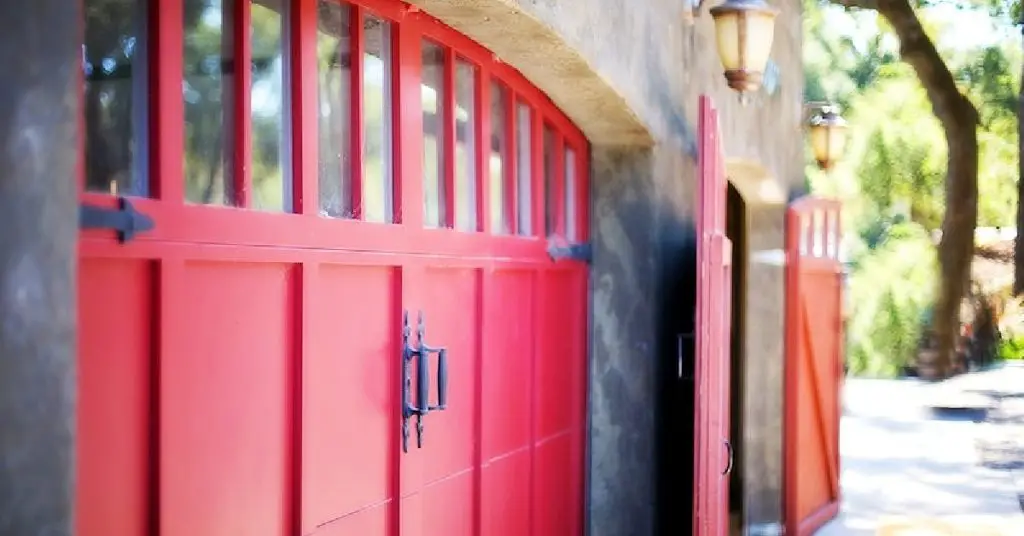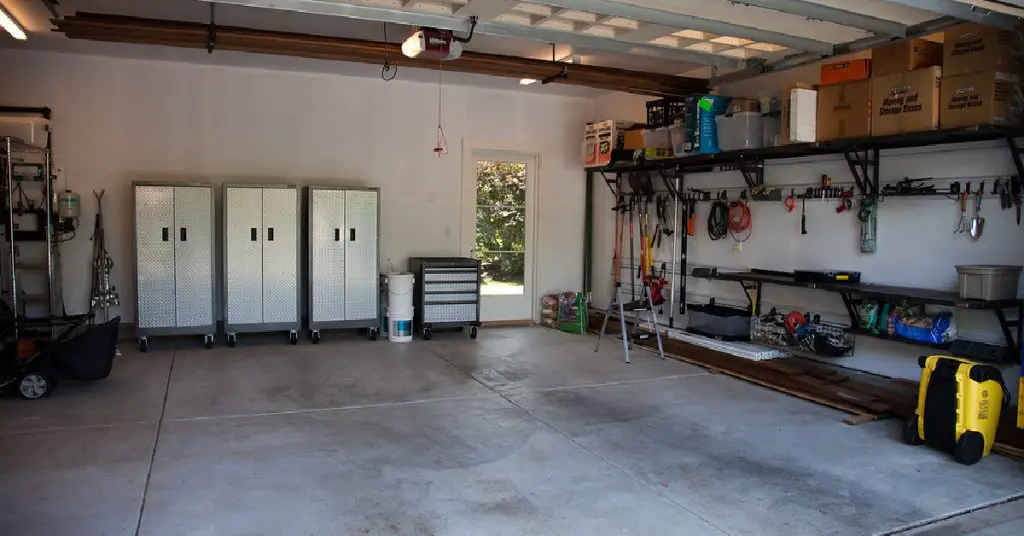If you have a garage door opener with a chain drive, it’s common for the chain to become loose over time. A loose chain can cause the door to function improperly and create an annoying knocking sound. The good news is that you can tighten the garage door chain yourself without needing to call a technician. In this comprehensive guide, we will walk you through the step-by-step process of how to tighten a garage door chain, ensuring that your door operates smoothly and quietly.
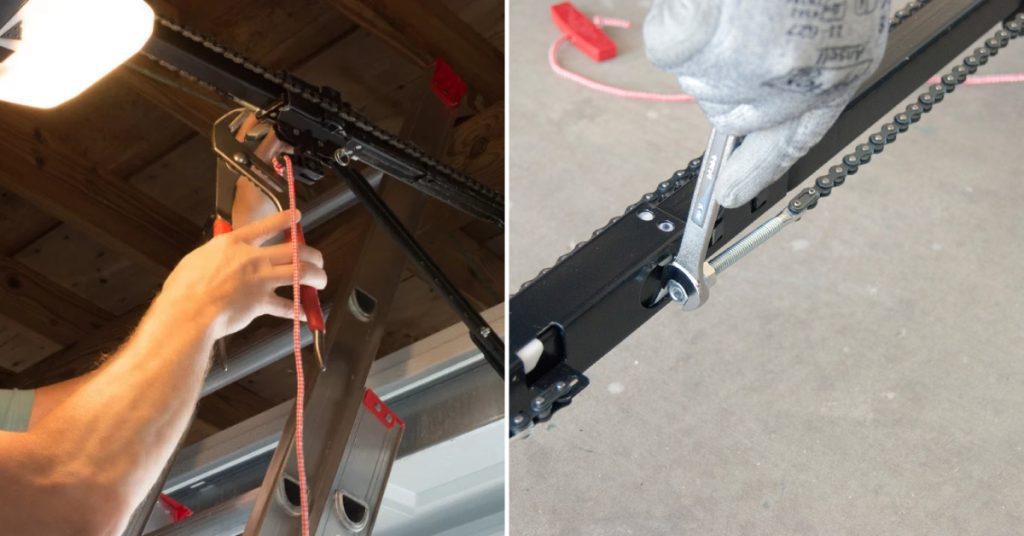
Key Takeaways:
- Loose garage door chains can cause noise and damage
- Tightening process involves adjusting nuts on the opener
- Proper tension is crucial for smooth operation
- Regular maintenance extends opener lifespan
Understanding the Importance of a Tight Garage Door Chain
Before we dive into the step-by-step process, it’s essential to understand why a tight garage door chain is crucial. Over time, the chain on a garage door opener can become loose due to normal wear and tear and the vibrations created by the motor. A loose chain not only causes noise but also puts additional strain on the opener, making it less efficient. It can even lead to the door jumping off its track, resulting in costly repairs. By tightening the chain, you can restore the proper operation of your garage door and prevent further damage.
7 Actionable Steps for How to Tighten a Garage Door Chain
Here are 7 actionable steps for how to tighten a garage door chain:
Step 1: Preparing for the Adjustment Process
To begin the process of tightening your garage door chain, you’ll need to gather a few tools and take some safety precautions. Make sure your garage door is closed, and disconnect the power supply to the opener. This can usually be done by unplugging it from the ceiling outlet or referring to your owner’s manual. Disengaging the opener is crucial to avoid any accidents while working on the chain.
Step 2: Locating the Adjustment Bolt
Once you have taken the necessary safety precautions, it’s time to locate the adjustment bolt on the garage door opener. This bolt typically has nuts on either side and is attached to a turnbuckle. The turnbuckle is responsible for connecting the opener arm to the chain and facilitating the opening and closing of the door. Familiarize yourself with the location of this bolt, as you will need to adjust it to tighten the chain.
Step 3: Loosening the Locking Nut
Using two wrenches, begin by loosening the locking nut that is closest to the opener. This will allow you to adjust the tension of the chain. By loosening the locking nut, you create room for tightening the adjustment nut, which will increase the tension in the chain. Take care not to loosen the locking nut too much, as it needs to remain in place during the adjustment process.

Step 4: Tightening the Adjustment Nut
With the locking nut loosened, it’s time to tighten the adjustment nut. Using an adjustable or half-inch wrench, turn the adjustment nut in a clockwise direction. This will increase the tension in the chain, gradually tightening it. It’s important to find the right balance – the chain should be tight enough to operate smoothly but not so tight that it restricts the movement of the door. Aim for a quarter-inch above the rail for a square rail opener and a half-inch above the rail for a T-rail opener.
Step 5: Achieving the Proper Chain Tension
As you tighten the adjustment nut, periodically check the tension of the chain. The chain should be tight enough to prevent any sagging or hitting against the door, but not overly tight. It’s better to have a slightly loose chain than risk damaging it by over-tightening. Take your time to adjust the tension gradually, ensuring that the chain remains properly aligned during the process. If necessary, recheck the tension after a few cycles of opening and closing the door to ensure it remains consistent.
Step 6: Reconnecting the Opener
Once you have achieved the desired tension in the chain, it’s time to reconnect the garage door opener. Plug the opener back into the power supply and re-engage it with the door. This can be done by either pulling the manual release rope back toward the opener until the trolley snaps back into place or using the wall button to open the door, which will automatically re-engage the trolley. Keep in mind that when re-engaging the opener, you may notice a slight drooping of the chain. This is normal and will be corrected when the door is in the open position.
Step 7: Testing the Garage Door Operation
To ensure that the chain tightening process has been successful, it’s important to test the operation of the garage door. Open and close the door multiple times, observing its movement and listening for any unusual noises. The door should operate smoothly, without any knocking sounds or excessive vibrations. If the chain still hits against the rail or the door, you may need to adjust the tension further. Repeat the adjustment process, making slight changes to the tension until the desired results are achieved.
You Can Check It Out to Straighten a Leaning Garage.
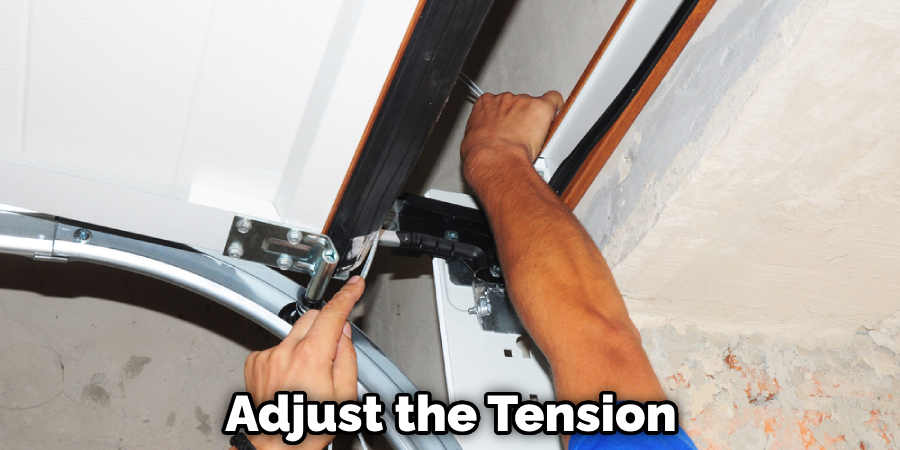
3 Regular Maintenance Tips
Tightening the garage door chain is just one aspect of regular maintenance that can prolong the lifespan and improve the performance of your garage door opener. Here are some additional maintenance tips to keep in mind:
- Clean and lubricate the drive chain once or twice a year using a light-penetrating oil lubricant. Avoid using grease, as it can attract dirt and grit.
- Clean any debris from the garage door tracks regularly to prevent unnecessary strain on the opener. Use a carburetor or brake cleaner instead of a lubricant to avoid misalignment.
- Check the safety reversal system, if applicable, by placing an object in the path of the closing door. The door should reverse upon contact, ensuring the safety of people and objects.
Regular maintenance will not only prevent future issues with your garage door chain but also ensure that your opener functions at its best for years to come. Remember, maintaining your garage door is an ongoing process. By staying proactive and addressing any issues promptly, you can enjoy a reliable and functional garage door for years to come.
When to Seek Professional Help
While tightening a garage door chain is a task that can often be done by homeowners, there may be situations where professional assistance is required. If you feel uncomfortable or unsure about performing the adjustment yourself, it’s best to contact a qualified service technician. Additionally, if you notice any other issues with your garage door, such as misalignment, strange noises, or malfunctioning safety features, it’s advisable to seek professional help to diagnose and address the problem effectively.
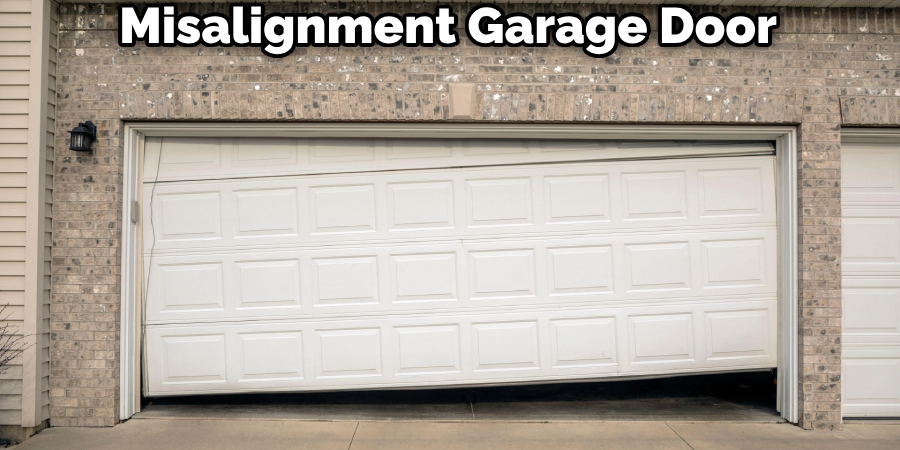
FAQs About How to Tighten a Garage Door Chain
Can You Tighten a Garage Door Opener Chain?
To tighten a garage door opener chain, first disconnect the power. Locate the adjustment mechanism on the opener unit, which is usually a bolt or tensioner. Use pliers or a wrench to turn it clockwise and tighten the chain. Test the door to ensure smooth operation, and repeat the adjustment if necessary. Lastly, lubricate the chain for optimal performance. If unsure, consult the manual or seek professional help.
Can I Lubricate Garage Door Chain?
Yes, you can lubricate your garage door chain to keep it operating smoothly. Start by cleaning the chain, then apply a specific garage door chain lubricant. Avoid using grease or oil-based lubricants. Apply the lubricant evenly along the entire chain and wipe off any excess. Finally, operate the garage door a few times to distribute the lubricant evenly. Regular maintenance and lubrication will extend the chain’s lifespan and ensure quiet operation.
Is Garage Door Chain Supposed to Be Loose?
No, the garage door chain is not supposed to be loose. The chain should have a certain amount of tension to ensure the proper functioning of the garage door. If the chain is too loose, it can cause the door to operate improperly or even fall off the track. On the other hand, if the chain is too tight, it can put excessive strain on the motor and other components. It is recommended to consult the manufacturer’s guidelines or a professional to adjust the tension of the garage door chain to the appropriate level for optimal performance.
Why Does My Garage Door Not Close Fully?
If your garage door is not closing fully, there are a few potential causes. First, check if the sensors near the bottom of the door are aligned and unobstructed. Next, ensure no objects are blocking the door’s path. Adjust the limit switches if necessary. Inspect and replace any damaged components. Lastly, check the power supply for any issues. If you’re unable to fix the problem, it’s best to consult a professional garage door technician for assistance.
Why is My Garage Door Not Closing Smoothly?
If your garage door is not closing smoothly, it could be due to dirty or worn-out rollers, insufficient lubrication of hinges and springs, tension issues with the springs, or problems with the motor. Clean or replace the rollers, lubricate the necessary parts, adjust the tension, or seek professional help if needed to ensure a smoother closing motion for your garage door.
Conclusion
Tightening a loose garage door chain is a relatively simple process that can be done by homeowners with basic tools and safety precautions. By following the step-by-step guide outlined in this article, you can ensure that your garage door operates smoothly, quietly, and efficiently. Regular maintenance, including chain tightening and other recommended practices, will help extend the lifespan of your garage door opener and prevent costly repairs down the line.

